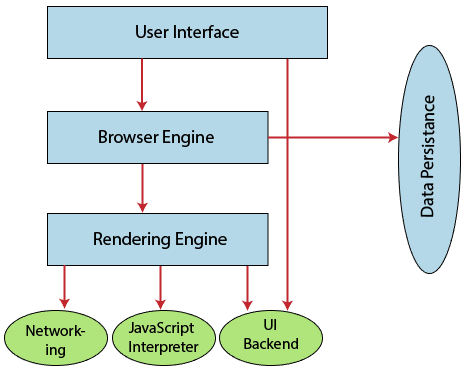Computer Components
Computer Memory
Computer Network
Computer Virus
Number Systems
Shortcut Keys
Terms
- What is a Browser
- Google Chrome
- Mozilla Firefox
- Internet Explorer
- Windows
- Computer Ports
- program
- Printers
- Microphone
- Monitor
- Motherboard
- Incognito Mode
- Mouse
- Memory Card
- CD
- ID
- ISO
- character
- server
- Keyboard
- Remote
- webcam
- Data
- URL
- keypad
- hub
- File
- Bytes
- Exabyte
- Gb
- Kilobyte
- Megabyte
- Petabyte
- Terabyte
- What is HDD
- What is SSD
- Memory vs Storage
- Non-volatile memory
- What is M.2 SSD
- How To Reboot A Computer
- Multi-Level Cell
- NAND Flash Memory
- What is the lock screen
- Block Storage
- Universal Serial Bus
- VRAM
- Cloud Hosting
- CompactFlash card
- What is WAP
- Classification of Memory
- Hardware vs Software
- Uses of Computer
- Uses of Internet
- Abacus
- Best Proxy Servers
- SSL VS. TLS
- Web Console
- GPU
- Difference Between LAN and WAN
- SSD and HDD
- Computer
- Data Migration
- JEDEC
- MLC vs. TLC vs. SLC NAND Flash
- VirtualBox Installation
- Num Lock
- PC
- MAC
- Continuous Data Protection
- Persistent Storage
- What is Bit
- Software Definition
- What is a File System
- When was the first computer invented
- How many generations of the computer
- Minicomputer
- Fourth Generation of Computer
- What is a Username
- What is ALU
Questions
What is a Browser
A browser is a software program that is used to explore, retrieve, and display the information available on the World Wide Web. This information may be in the form of pictures, web pages, videos, and other files that all are connected via hyperlinks and categorized with the help of URLs (Uniform Resource Identifiers). For example, you are viewing this page by using a browser.
A browser is a client program as it runs on a user computer or mobile device and contacts the webserver for the information requested by the user. The web server sends the data back to the browser that displays the results on internet supported devices. On behalf of the users, the browser sends requests to web servers all over the internet by using HTTP (Hypertext Transfer Protocol). A browser requires a smartphone, computer, or tablet and internet to work.
History of Web Browser
- The WorldWideWeb was the first web browser. It was created by W3C Director Tim Berners-Lee in 1990. Later, it was renamed Nexus to avoid confusion caused by the actual World Wide Web.
- The Lynx browser was a text-based browser, which was invented in 1992. It was not able to display the graphical content.
- Although, the first graphical user interface browser was NCSA Mosaic. It was the first most popular browser in the world, which was introduced in 1993.
- In 1994, there were some improvements occurred in Mosaic and came to Netscape Navigator.
- In 1995, Microsoft introduced the Internet Explorer It was the first web browser developed by Microsoft.
- A research project started on Opera in 1994. Later, it was publicly introduced in 1996.
- Apple's Safari browser was introduced in 2003. It was specifically released for Macintosh computers.
- In 2004, Mozilla introduced Firefox as Netscape Navigator.
- In 2007, a browser Mobile Safari was released as Apple mobile web browser.
- The popular browser Google Chrome was launched in 2008.
- The fast-growing mobile-based browser Opera Mini was released in 2011.
- The Microsoft Edge browser was launched in 2015.
Features of Web Browser
Most Web browsers offer common features such as:
- Refresh button: Refresh button allows the website to reload the contents of the web pages. Most of the web browsers store local copies of visited pages to enhance the performance by using a caching mechanism. Sometimes, it stops you from seeing the updated information; in this case, by clicking on the refresh button, you can see the updated information.
- Stop button: It is used to cancel the communication of the web browser with the server and stops loading the page content. For example, if any malicious site enters the browser accidentally, it helps to save from it by clicking on the stop button.
- Home button: It provides users the option to bring up the predefined home page of the website.
- Web address bar: It allows the users to enter a web address in the address bar and visit the website.
- Tabbed browsing: It provides users the option to open multiple websites on a single window. It helps users to read different websites at the same time. For example, when you search for anything on the browser, it provides you a list of search results for your query. You can open all the results by right-clicking on each link, staying on the same page.
- Bookmarks: It allows the users to select particular website to save it for the later retrieval of information, which is predefined by the users.
What is the URL (Uniform Resource Locator)?
A uniform resource locator is the address of a resource on the internet or the World Wide Web. It is also known as a web address or uniform resource identifier (URI). For example, https: www.javatpoint.com, which is the URL or web address for the javatpoint website. A URL represents the address of a resource, including the protocol used to access it.
A URL includes the following information:
- It uses the protocol to access the resource.
- It defines the location of a server by IP address or the domain name.
- It includes a fragment identifier, which is optional.
- It contains the location of the resource in the directory of the server.
A URL forwards user to a particular online resource, such as a video, webpage, or other resources. For example, when you search information on Google, the search results display the URL of the relevant resources in response to your search query. The title which appears in the search results is a hyperlink of the URL of the webpage. It is a Uniform Resource Identifier, which refers to all kinds of names and addresses of the resources on the webservers. URL's first part is known as a protocol identifier, and it specifies the protocol to use, and the second part, which is known as a resource name, represents the IP address or the domain name of a resource. Both parts are differentiated by a colon and two forward slashes like http://www.javatpoint.com.
Component of a Web browser
The primary components of a browser are shown in the below image:

- User Interface: The user interface is an area where the user can use several options like address bar, back and forward button, menu, bookmarking, and many other options to interact with the browser.
- Browser Engine: It connects the UI (User Interface) and the rendering engine as a bridge. It queries and manipulates the rendering engine based on inputs from several user interfaces.
- Rendering Engine: It is responsible for displaying the requested content on the browser screen. It translates the HTML, XML files, and images, which are formatted by using the CSS. It generates the layout of the content and displays it on the browser screen. Although it can also display the other types of content by using different types of plugins or extensions. such as:
- Internet Explorer uses Trident
- Chrome & Opera 15+ use Blink
- Chrome (iPhone) & Safari use Webkit
- Firefox & other Mozilla browsers use Gecko
- Networking: It retrieves the URLs by using internet protocols like HTTP or FTP. It is responsible for maintaining all aspects of Internet communication and security. Furthermore, it may be used to cache a retrieved document to reduce network traffic.
- JavaScript Interpreter: As the name suggests, JavaScript Interpreter translates and executes the JavaScript code, which is included in a website. The translated results are sent to the rendering engine to display results on the device screen.
- UI Backend: It is used to draw basic combo boxes and Windows (widgets). It specifies a generic interface, which is not platform-specific.
- Data Storage: The data storage is a persistence layer that is used by the browser to store all sorts of information locally, like cookies. A browser also supports different storage mechanisms such as IndexedDB, WebSQL, localStorage, and FileSystem. It is a database stored on the local drive of your computer where the browser is installed. It handles user data like cache, bookmarks, cookies, and preferences.
How does a browser work?
When a user enters a web address or URL in the search bar like javatpoint.com, the request is passed to a domain name servers (DNS). All of these requests are routed via several routers and switches.
The domain name servers hold a list of system names and their corresponding IP addresses. Thus, when you type something in the browser search bar, it gets converted into a number that determines the computers to which the search results are to be displayed.
The browser acts as a part of the client-server model. A browser is a client program that sends the request to the server in response to the user search queries by using Hypertext Transfer Protocol or HTTP. When the server receives the request, it collects information about the requested document and forwards the information back to the browser. Thereafter, the browser translates and displays the information on the user device.
In Brief:
- When a user enters something (like javatpoint.com) in the browser. This request goes to a domain name server.
- The browser sends the user request to the server using an IP address, which is described by the domain name server.
- The domain name server sends an IP address to the web server that hosts the website.
- The server sends the information back to the IP address, which is defined by the browser at the time of the request. The requested page may include links to other files on the same server, like images, for which the browser also requests the server.
- The browser gathers all the information requested by the user, and displays on your device screen in the form of web pages.
List of Internet Browsers
There are various types of internet browsers, which are as follows:
- Microsoft Edge: Microsoft Edge is a web browser that comes pre-installed with Windows 10 operating system and Windows Server 2016. It was introduced to replace the Internet Explorer Web browser, and its code name was Spartan. It offers various types of features such as freestyle writing over Web page displays, refined search, and presentations for e-books and other reading resources.
Microsoft Edge was developed under the Spartan codename Project. In April 2015, Microsoft changed the project Spartan name as Microsoft Edge. Although Internet Explorer and Edge are included with Windows 10, Edge act as a default browser. It combines new web technology evaluations and enhances the speed of browsing.

Although, Internet Explorer 11 was available in Microsoft Windows operating system, Microsoft Edge has become the default browser in Windows 10. It needs at least 1 gigabyte of memory. It offers several types of features, such as annotation features, a new rendering engine, and easy-to-use icons, etc. Furthermore, it also provides better security as compared to Internet Explorer, and it can be combined with Cortana, Microsoft's virtual personal assistant.
Features of Microsoft Edge
- It provides support for Firefox and Chrome add-ons.
- It has the ability to fill the form automatically.
- It can be integrated with Cortana.
- It provides faster page rendering.
- It has more security features and also allows private browsing.
- It is modern, lightweight, and reduces resource consumption.
Latest versions of Edge browser
| Platform | Versions | Release Date |
|---|---|---|
| Window 10 | 79.0.309.71 | 22-01-2020 |
| Window 10 Mobile | 40.15254.603 | 21-01-2020 |
| Xbox One | 40.15063.0 | 30-08-2018 |
- Amazon Silk: Amazon silk is a proprietary Internet browser. It was released for Fire OS devices on 15 November 2011. It is based on the open-source Chromium project and derives most of the features from the Google Chrome browser. It divides the task of loading webpages between Amazon's servers and Fire.

Silk is the default browser on most Amazon hardware devices as well as on app-based Kindle devices, TV, Fire, and compatible Echo devices. Furthermore, it is the first new mass-market, client software delivery mechanism, which should be built from the base of the cloud, not only the web.
How does Silk Work?
Silk browser works through Amazon EC2 (Elastic cloud computing). EC2 acts as the middleman between devices and webpages and simplify them for examined mobile consumption. Then, it includes the whole host of processes like page caching, file compression, and local file storage.
It tries to guess your browsing habits. Accordingly, it predicts the pages that you may like to visit, and then pre-loads those pages in advance. These background processes use lower bandwidth and promote speed of page loading. If EC2 is offline, the silk browser switches to a backup mode where it translates all information on the Kindle Fire itself.
Rendering pages on EC2
When the all contents of a page have been fetched on EC2, it renders the pages for display in the client's browser window. It depends on the amount of load and the client's network conditions.
The components that can be handed off to EC2 to speed up browsing are: HTML, CSS, Networking, JavaScript, Block building, Marshaling, Native OM, etc.
- Opera: An Opera web browser was first conceived at Telenor company in 1994, later bought by the Opera Software on 1 April 1995. It was designed for desktop and mobile interfaces, but it is more popular now for mobile phones. It is based on Chromium, and it uses the blink layout engine. An opera mini was released for smartphones on 10 August 2005 that could run standard web browsers. It can be downloaded from the google play store or Apple play store.
- Apple Safari: Safari is an internet browser available for the Macintosh, and Windows operating systems included the iPhone, iPad, and iPod Touch. It was developed by Apple, Inc. on 30 June 2003. It is the default browser for the operating system in its products, such as OS X for the MacBook and Mac computers and iOS for the iPad and iPhone mobile devices. It is at number four in the browser market after Microsoft Internet Explorer, Mozilla Firefox, and Google Chrome. It uses the WebKit engine, which is used for rendering fonts, displays graphics, determining page layout, and running JavaScript.
- Google Chrome: Google Chrome is an open-source internet browser. It is developed by Google on 11 December 2008 for Windows, Linux, Mac OS X, Android, and iOS operating systems.
- Mozilla Firefox: The Mozilla Firefox web browser is developed by the Mozilla Foundation and its subordinate company, Mozilla Corporation. It was first released was beta on 23 September 2002. Although it was released as the Mozilla Browser, it was internally code-named Phoenix. The First version 1.0 of Firefox was introduced on 9 November 2004.
- Internet Explorer: It is a web browser that is manufactured by Microsoft Corporation, and it is included with the Microsoft Windows operating system. But It was removed in Window 10 in support of Microsoft's new Edge Browser.
How to download different type of browsers
Follow below links to download the different browsers:
Google Chrome: https://www.google.com/chrome/
Mozilla Firefox: https://www.mozilla.org/en-US/firefox/
Opera: https://www.opera.com/
Apple Safari: https://support.apple.com/downloads/safari


